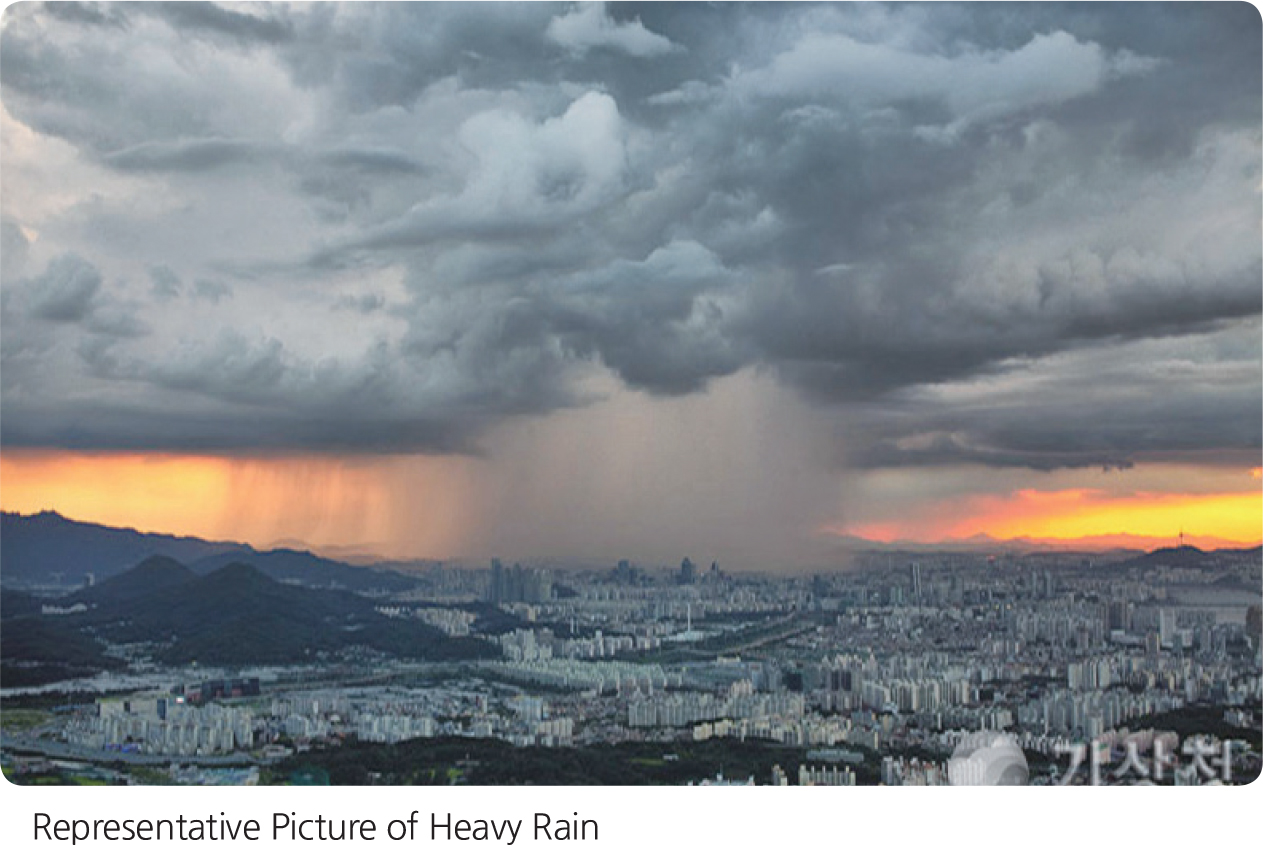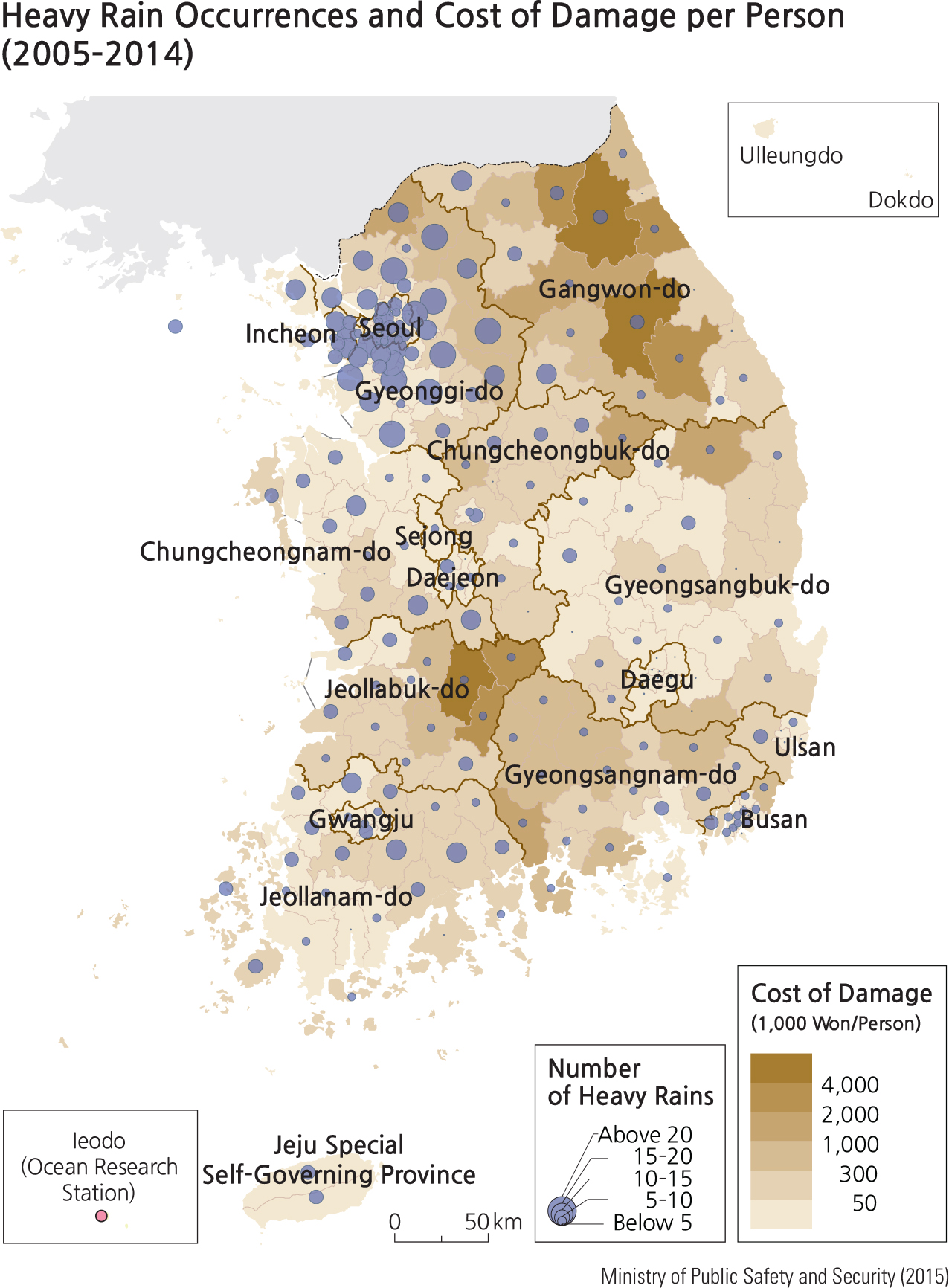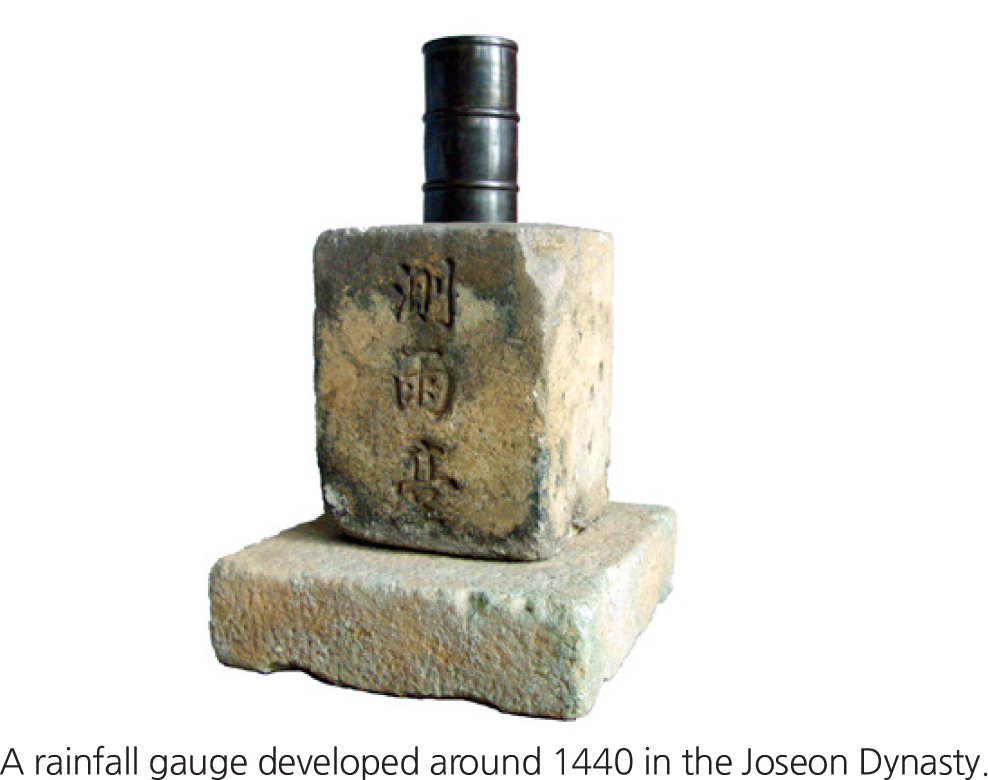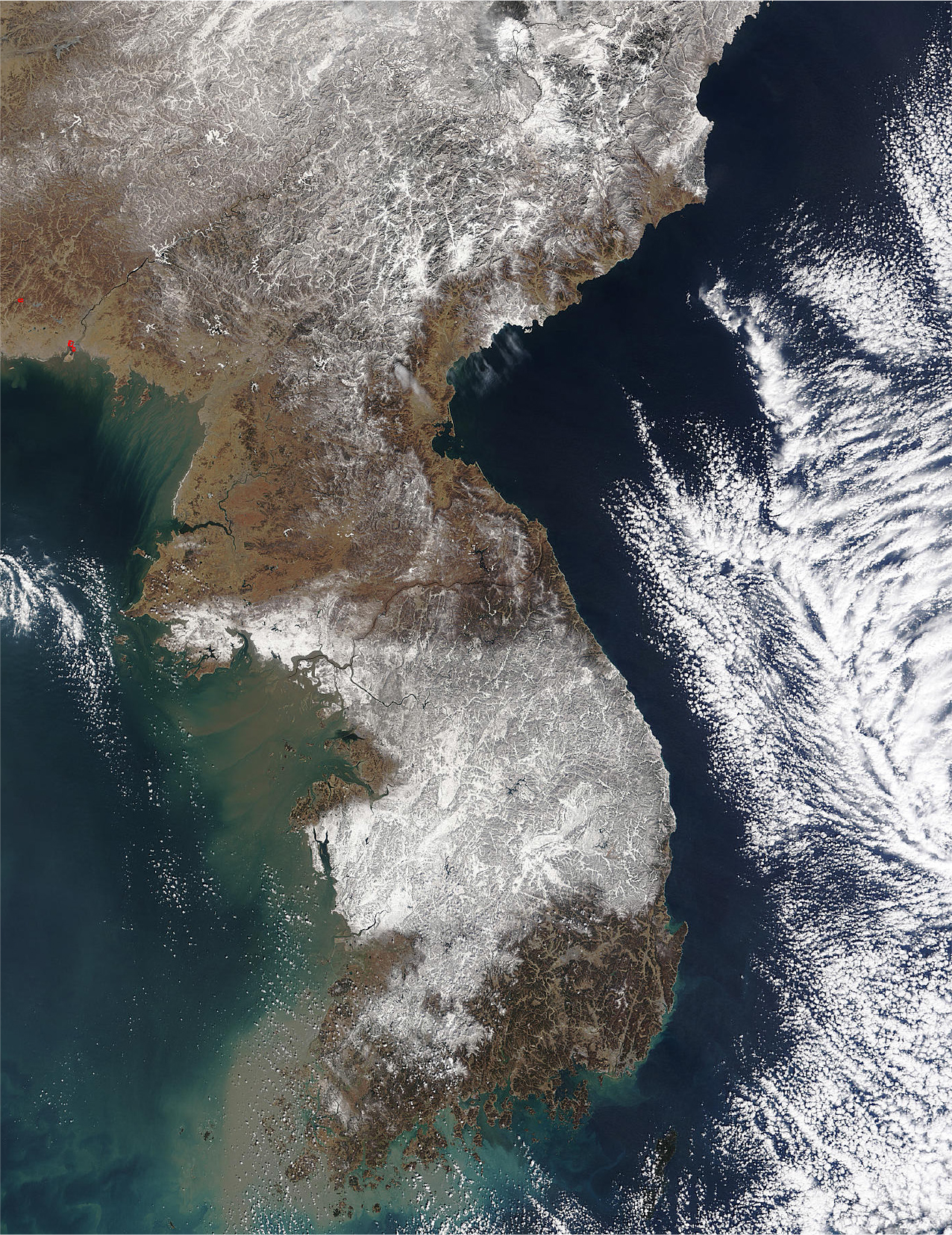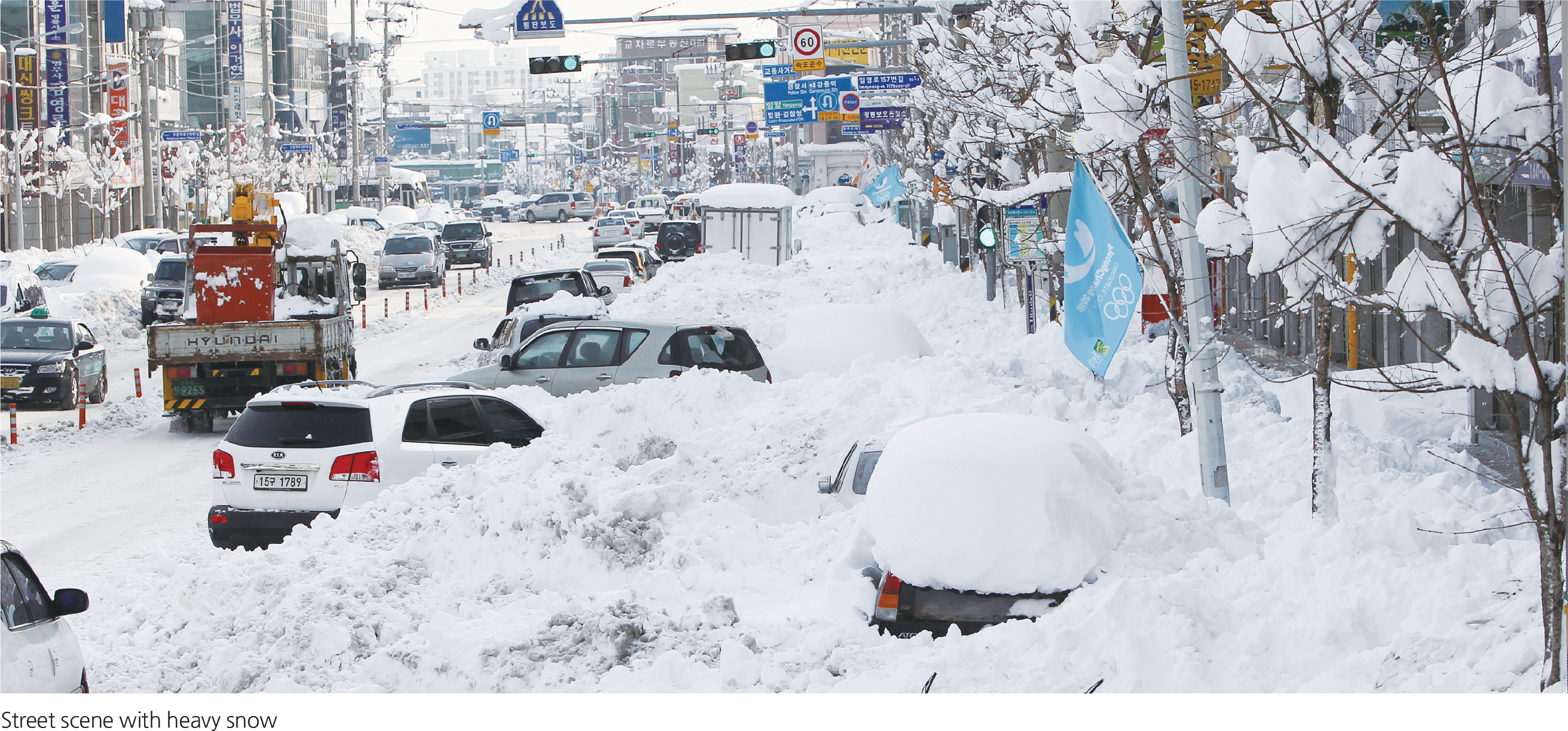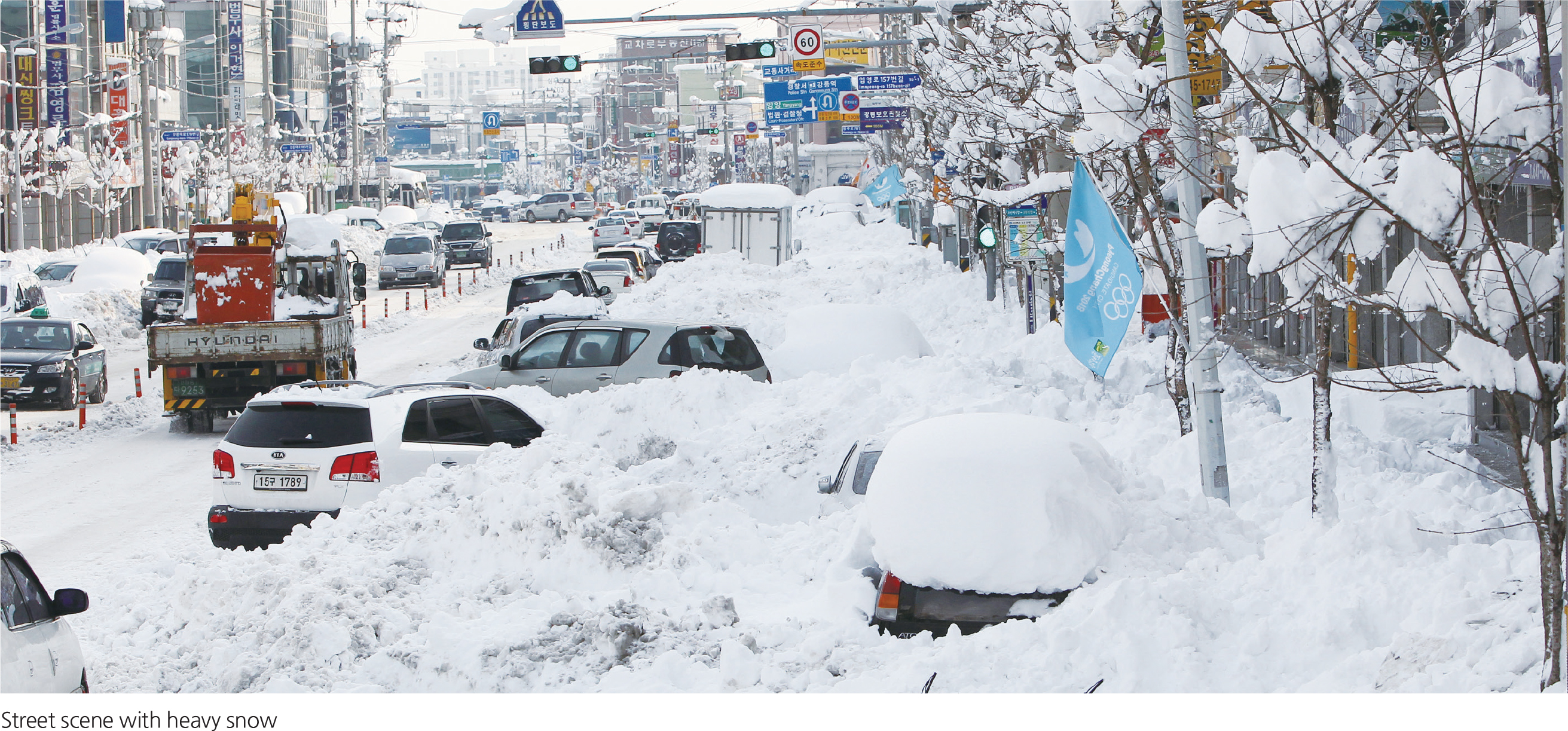for Children
During the rainy season, especially in summer, Korea can experience heavy rains that sometimes exceed 300 mm per day. The resulting floods can cause damage to buildings, crop fields, roads, and other infrastructure. Meteorological forecasts help predict heavy rains and special advisories or warnings are issued to help people prepare. Korea has a long history of meteorological record keeping and developed an early rainfall gauge around 1440 A.D. Today Korea has a network of precipitation and water level gauging stations in streams across the country that measure and record conditions every ten minutes. A flood control system with a total of 46 flood control offices is spread nationwide. These offices help prevent floods by holding and shifting waters in response to changing river levels.
|
